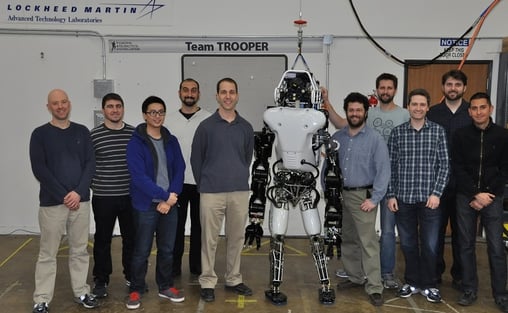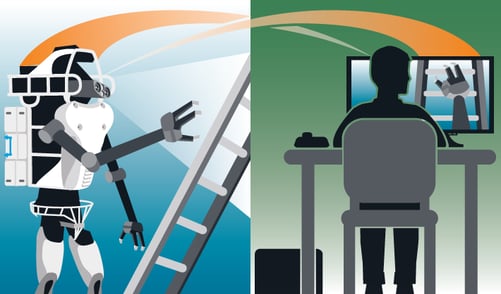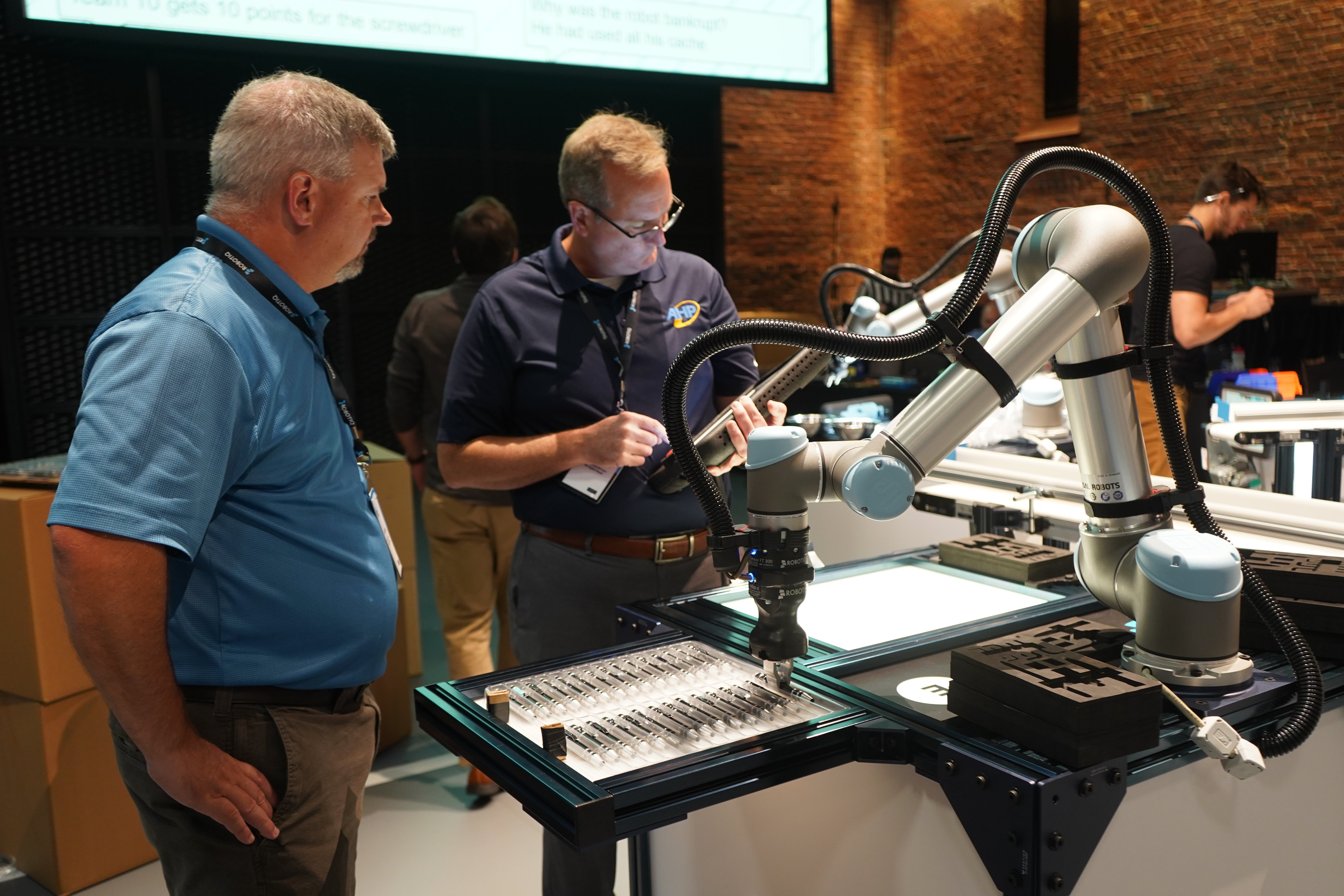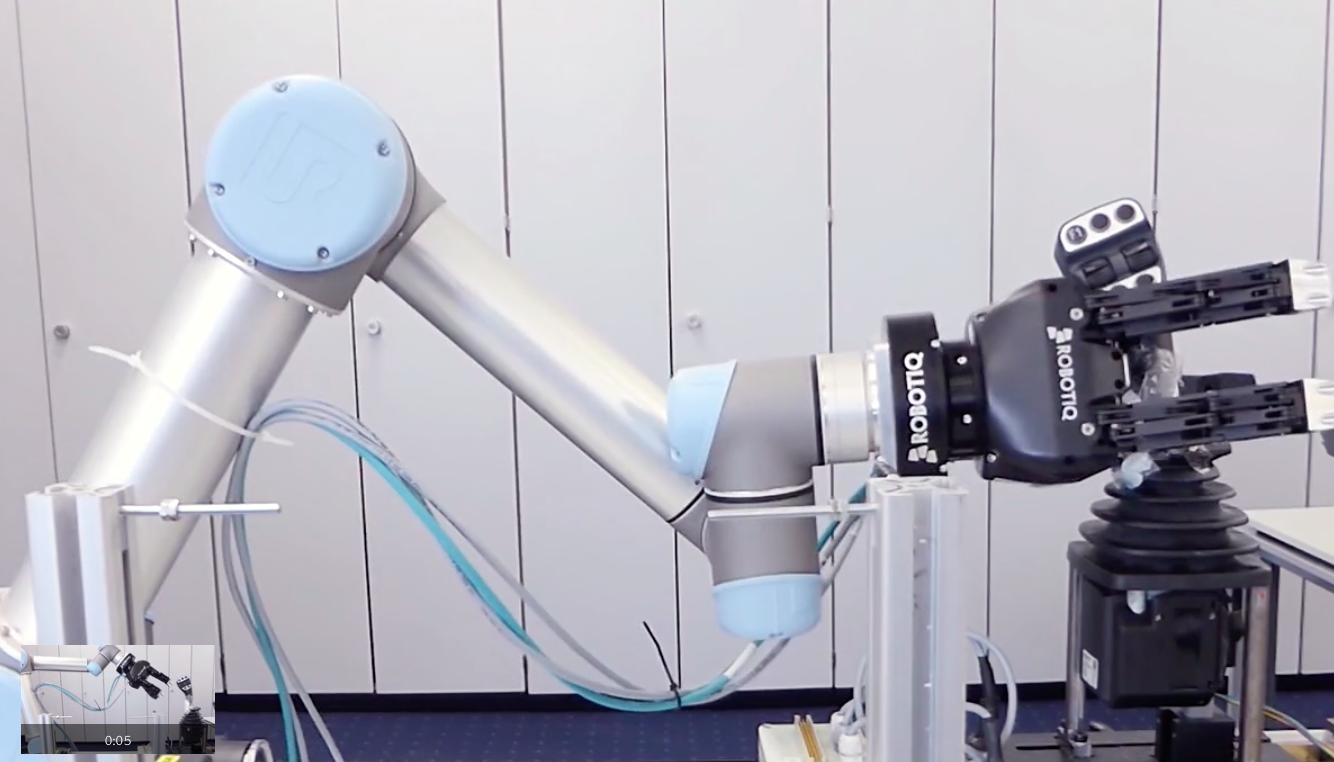Lockheed Martin getting ready for the DARPA Robotics Challenge

Posted on May 12, 2015 11:41 AM. 5 min read time
Lockheed Martin is usually known for its aerospace and defense applications. However, a couple years ago they put together a project with 2 American universities in order to participate in the DARPA Robotics Challenge. Now they are getting ready to attend the final which will be held in Pomona, California on June 5-6, 2015. Here's what’s cooking for the TROOPER team.
The Team
The Lockheed Martin team is a mix of students from the University of Pennsylvania, Rensselaer Polytechnic Institute and Lockheed Martin staff. The University of Pennsylvania students are working on the perception (vision), the lower body and entire body control to enable the robot to walk properly. Rensselaer Polytechnic Institute is working on the upper body planning and manipulation. The student’s work is backed by robotic experts from Lockheed Martin, who help the team by providing solid hardware and software solutions for all components of the robot.

The team went through a couple of steps before qualifying for the final challenge. Here's what has happened over the last few years.
- Phase 1: In June 2013, the team competed in the Virtual Challenge and completed a virtual obstacle course using a virtual robot. The tasks that were asked of the team were then translated into real life in the next challenge. The goal of the Virtual Challenge was to confirm if the teams were able to control their robots. The reward for the 7 best teams was the opportunity to receive an Atlas robot for the next stage of the challenge.
- Phase 2: In December 2013, the team took part in the DARPA Robotics Challenge Trials held in Florida. A total of 16 teams were competing in eight different tasks that tested mobility, manipulation skills and perception. Every team used support cables to ensure that the robot didn’t pancake and power cords to feed the robot. The top 8 contenders were able to advance to the final.
- Phase 3: Now the third phase is next. With new rules, new robots and adjusted challenges, the teams have to be ready for a more difficult challenge than the trials. The rules require self-sufficient robots, so no power cords and the robots can’t be supported by external devices, so no support cables. This ups the ante in terms of materials (robots can fall) as well as communications (communications can crash). This will be a very interesting challenge for all the teams.
The Robot: LEO
The Lockheed Martin team scored high enough to qualify for one of the Atlas robots because of their success in the Virtual Challenge phase of the competition. This robot was re-designed for the DARPA Robotics Challenge Final. Take a look at the following video to have a better idea of the complexity of the robot that teams have to deal with.
For further information on the robot itself, read this article on the latest version of the Atlas robot.
Out of a total of 25 teams, only 7 had the chance to work with the Atlas robot. The advantage of using this robot is that the hardware has already been developed, so the team can be a little smaller and concentrate their efforts on the programming, stabilization and manipulation tasks. The other teams had to build an entire robot and do the programming, stabilization and manipulation tasks, too... That's a lot of work.
Lockheed Martin's Trooper is one of the 8 teams that will be using our 3-Finger Adaptive Gripper. The end effector proved it could provide some good handling and dexterity skills in the trials. Since the Gripper is electric, is using an underactuated principle and has adaptive technology, it is a great choice for a challenge that needs to perform divergent tasks. Notice that all the teams that are using an Atlas robot are also using the 3-Finger Gripper, plus the Tartan Rescue team.

The Challenge
The final stage of the DARPA Robotics Challenge will have a total of 8 tasks. Each task will count for one point and the total amount of points will determine the winners. Tasks are separated into 3 different groups, the first being the outdoor task of using a vehicle. After this there will be several indoor tasks such as opening a valve, making a hole in a wall, etc. Then the challenge will move back outdoors and simply involves climbing a set of stairs (well it's not that simple when you weigh like 400 pounds and have to balance).
Now with a total of $3.5 million in prizes, the contest is getting more exciting than ever before. DARPA plans to award $2 million to the first place team, $1 million to the runner-up and $500,000 to the third-place team.
“During periodic reviews with the DRC teams we’re already seeing them perform at a much higher level than they were last year. We’re excited to see how much further they can push the technology,” said Dr. Gill Pratt, program manager for the DRC. “As any team will tell you, we’re not making it easy. DARPA has been consulting with our international partners to decide on what steps we need to take to speed the development of disaster-response robots, and the DRC Finals will reflect those realities.”
A couple of differences between the 2013 trial and the upcoming challenge is that the robots will have only one single battery pack to use and the trial will be one continuous set of tasks over a one hour period. This means that the challenge will be shorter and more intensive (for the robots and the teams) than ever, as they will have to combine all the tasks in rotation.
We at Robotiq wish all the teams participating in the DRC, Good Luck for the Finals.








Leave a comment